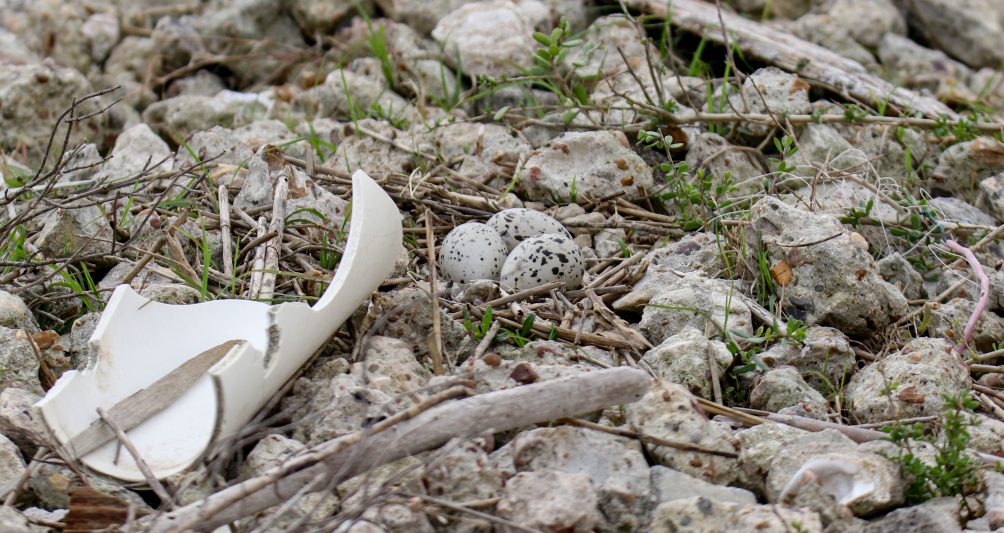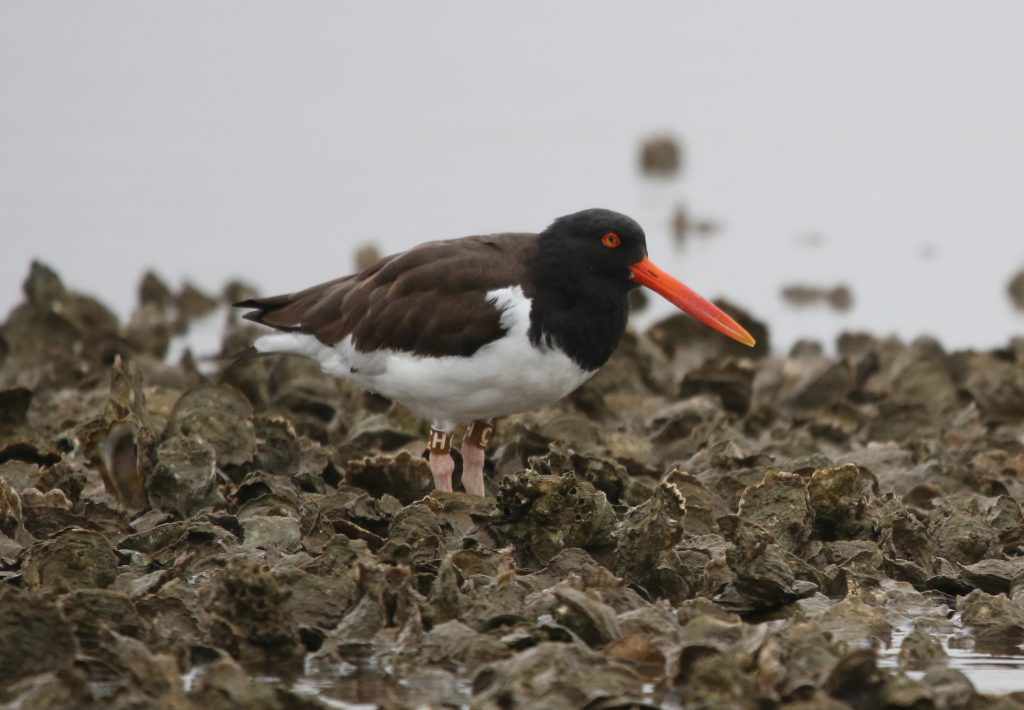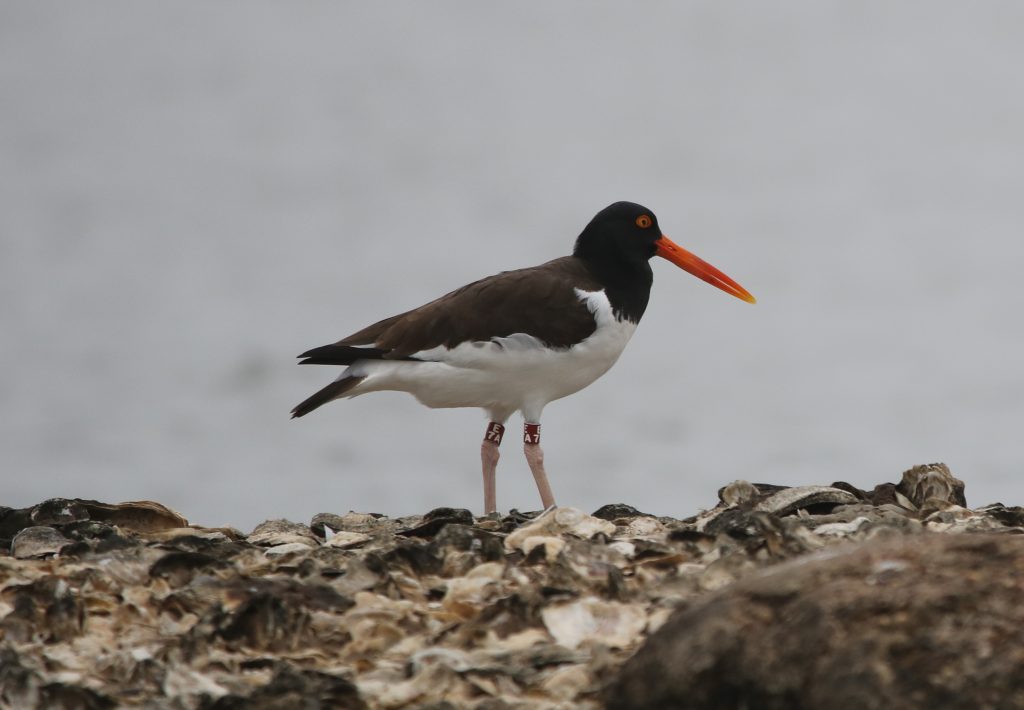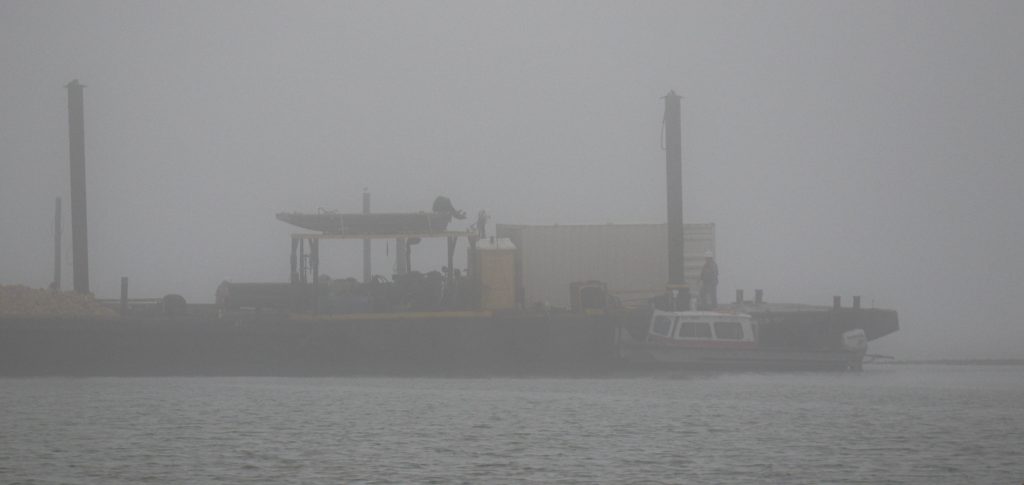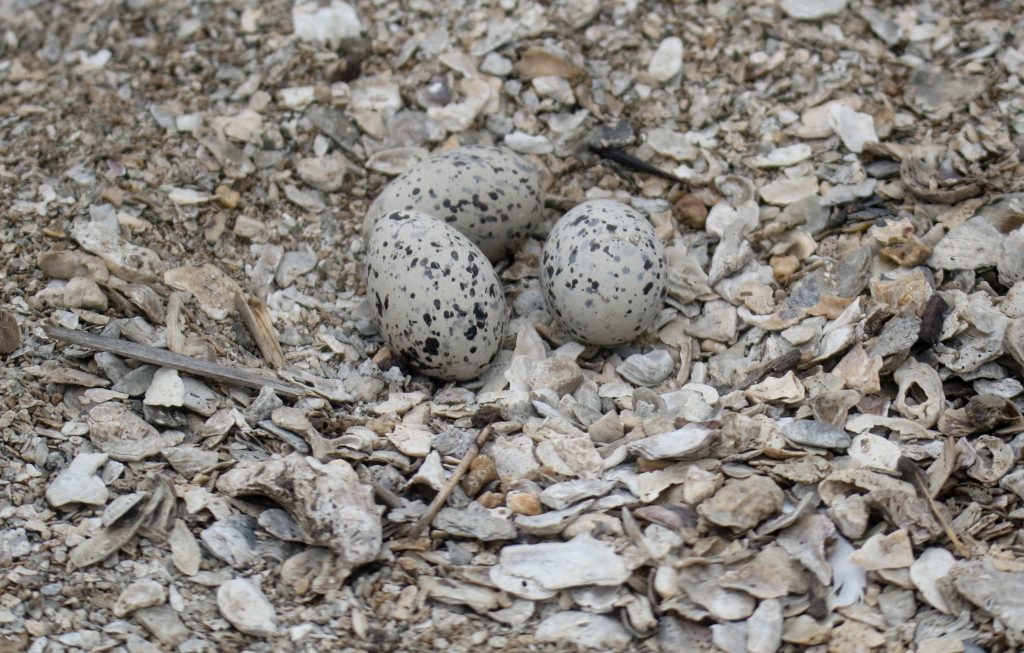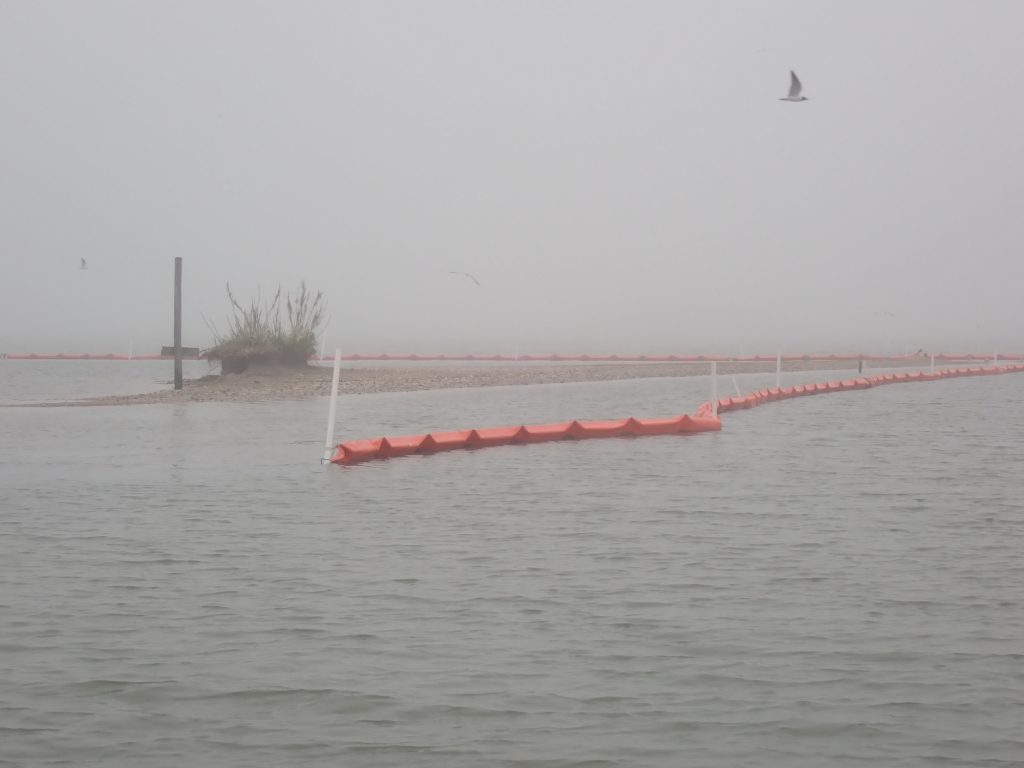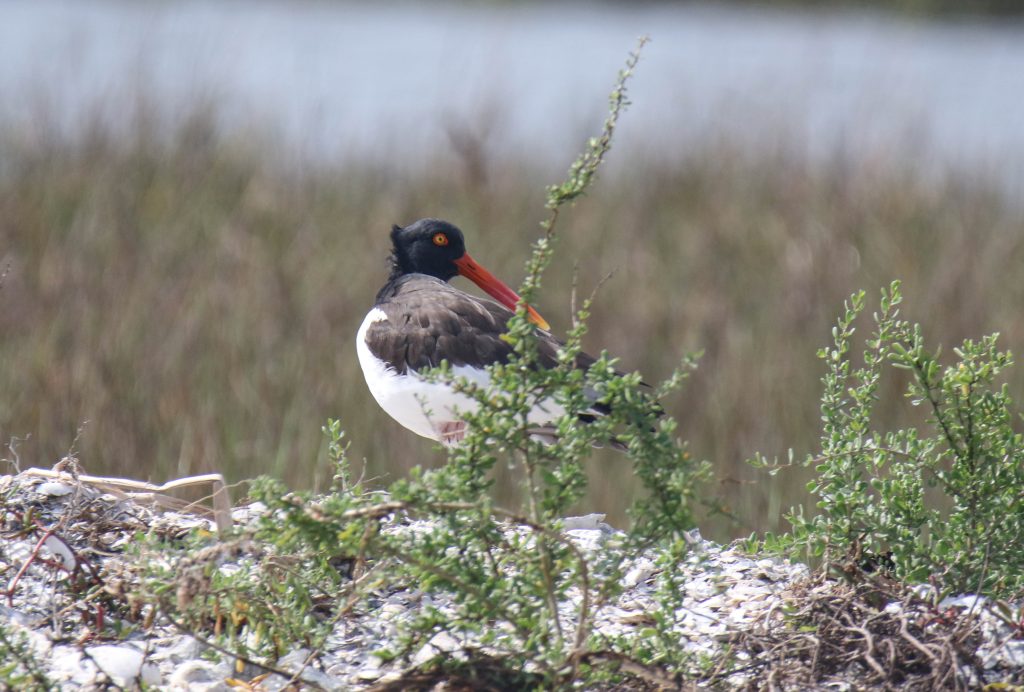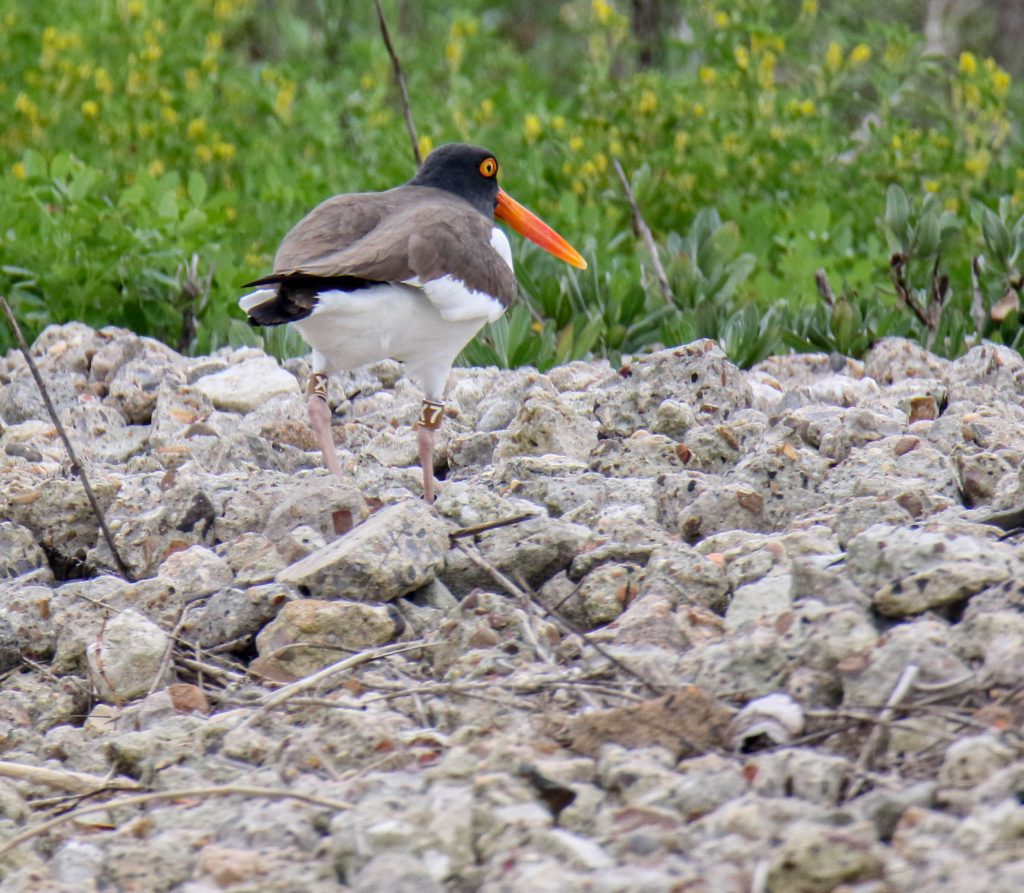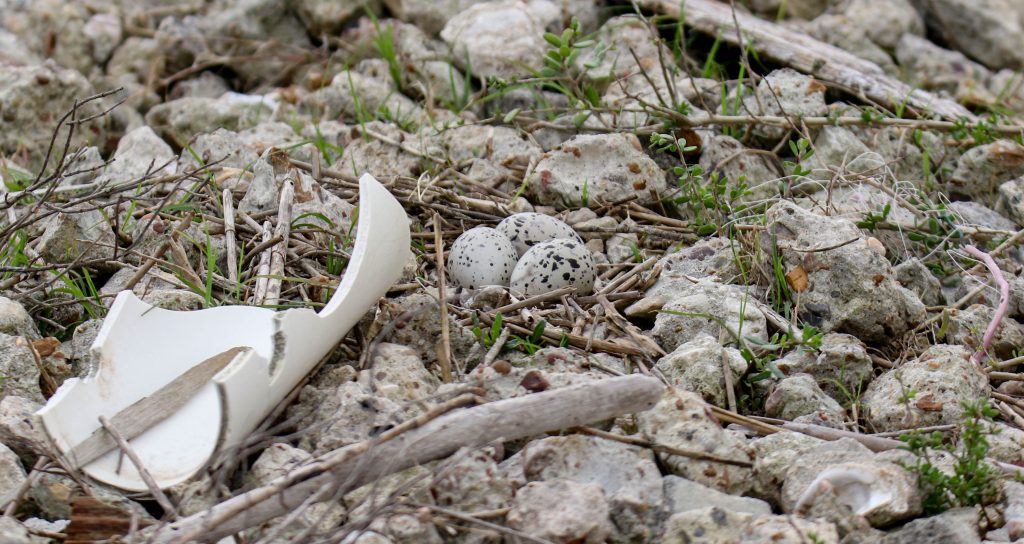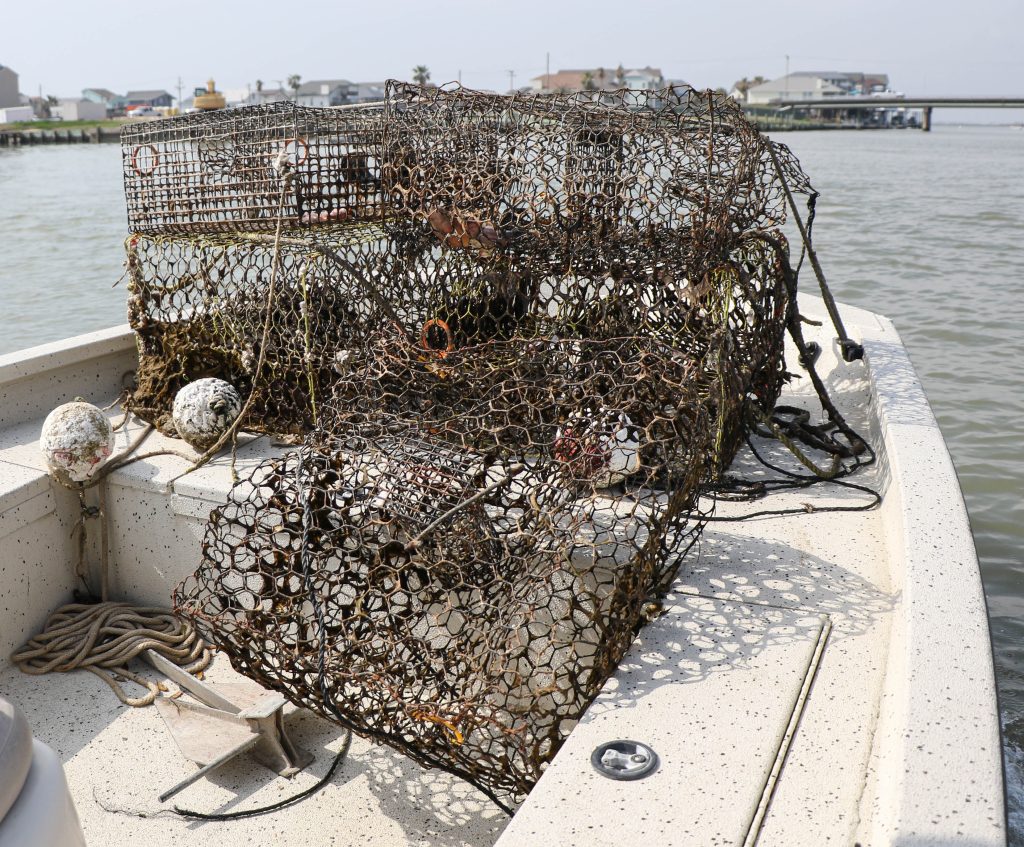By Susan Heath
On Tuesday this week I was joined by Taylor Bennett, our Coastal Biologist, and Taylor Snyder, our research intern, for our first survey of the Brazoria Bays. This includes the western end of West Galveston Bay, Bastrop Bay, Christmas Bay and Drum Bay. There’s only a few pairs of oystercatchers in Brazoria County but it’s a big area to cover so it takes a while. The weather forecast called for fog but fortunately it was only hazy and we could see just fine.
We headed out to West Galveston Bay first and discovered there is a new breakwater along the western side of Chocolate Bay. Interesting. I’m sure its to keep the shoreline there from eroding but it looked like they might be filling in behind it. That would make some good oystercatcher habitat! We headed over to the mooring facility but that pair wasn’t there. Ditto for the pair at Alligator Point so we headed back to Bastrop Bay.
We found CH & unbanded feeding on a reef along the channel that leads out into Bastrop Bay.
I banded CH way back in 2014 but she moved from her nesting spot and I don’t know where she nests now so consequently I don’t see her much. The last sighting was in 2020! We will have to do some exploring to see if we can find her hidey hole.
There weren’t any other oystercatchers in Bastrop Bay and the habitat that isn’t really suitable for breeding anymore so I don’t expect we’ll find any as the season goes on. We headed across Christmas Bay and went to Drum Bay where AR & unbanded nest. Last year when we did our first survey on March 9, we found they had a nest that was already hatching. Thus, the February survey this year but they weren’t home. Everyone seems to be nesting a bit late this year.
E7A & unbanded were feeding on a reef and came flying in when we approached their island.
If they want to succeed there, they needed to lay their nest a couple of weeks ago. The south wind will kick up the tides and inundate this island in March unless it’s a very unusual year. We looked for K0 & U7X but we couldn’t find them. Hopefully next time.
On Thursday I headed out to the Galveston part of West Galveston Bay with Alan Wilde and John Wright. It wasn’t foggy when we left the boat ramp but by the time we got out to Jones Bay it looked like this.
Sheesh. We made our way around staying close to the islands so we could find our way. Despite all the disturbance from the Tiki Spoil expansion, we found that E4A & unbanded had laid a nest with three eggs.
This is their island.
You can see how close the construction is to this nest and how low the island is. They will be lucky if this succeeds. All the other pairs were in place but we didn’t find any new nests so we headed out to check Marker 52. Fortunately, the tide was a bit high and we could skirt the edge of Marker 52 to stay out of trouble in the fog.
Again, everybody was home but nobody had a nest. YM & JH were acting quite suspicious but we couldn’t find a nest anywhere. The other two North Deer pairs weren’t home so we headed over to South Deer.
F1A & E2A were feeding out on their reef. I completely expected them to have a nest by now. Y7 was out on a reef alone but we couldn’t find his mate on a nest anywhere. Quite odd! The sun was trying hard to poke through and just as we reached the docks along Sportsman Road, the fog vanished just like magic. Awesome! The sky and water were both blue in the sun and it was suddenly a beautiful day!
We found C8A on the Gangs Bayou breakwater and her mate on one of the constructed mounds behind the breakwater.
I thought for sure they had a nest back there but it was just a scrape. Soon! A4A & unbanded were on the breakwater too though it took us a while to find them because they were hiding. Silly birds.
We found only a few oystercatchers on the docks and at 8 Mile Road. YK & unbanded were standing up on a shell bank on Galveston Island but no nest there either. All three pairs were home on Jigsaw for the first time this year but none of them had any action. Things are really slow to get going this year! Do the birds know something we don’t?
All the nests on Struve Luci were in fine shape and when we got to the east end of the island HM started flying around us calling and going crazy. He just would not quit. You’re giving away your secrets HM! The only place he and X7 have to nest is on a rock wall that extends out from the Galveston shoreline by all the houses. At first we didn’t see X7 up there but then Alan spotted her trying to sneak away.
We found their nest on the highest part of the rock wall.
Because the rock wall is connected to the mainland, we have to worry about mammals finding it so we’re extra careful. We didn’t get off the boat and Alan took a photo of it from afar (he has a 600x lens). Ok HM & X7, your secret is safe with us!
Since it had cleared up we headed up to Swan Lake. All the pairs were there but we didn’t find any new nests. K7 gave us the business for the first time this year so I expect they’ll have a nest next week. We headed back down to West Galveston Bay and went back to Confederate Reef to pick up a couple of abandoned crab traps. On the way we checked out some other reefs we don’t often check and found two additional traps and some oystercatchers belonging to the gang of youngsters. We put all the crab traps on the bow of the boat. Sheesh those things stink! Only one of them had a live critter (a blue crab) and Alan successfully set it free without harm. One time we found one of those traps with five Diamondback Terrapins in it! Abandoned crab traps are a big hazard to wildlife!
I expect next week or the week after we are going have a big nest day but we’ll see!
If you like oystercatchers and you want to support this project, you can make a donation (thank you!) on our website here. And how could anyone not like oystercatchers! You can also adopt a pair of oystercatchers to support this project if you’d like. If you adopt a pair, you will receive an adoption certificate for your birds and I will update you monthly on their progress throughout the breeding season. All adoption funds will be used to fund our work for the oystercatchers.
Current Stats for upper Texas coast from Dickinson Bay to East Matagorda Bay: 5 nests being incubated, 0 failed nests, 0 nests with unfledged chicks, 0 nest with undetermined status, 0 chicks fledged
Note: All trapping and banding for this project is in accordance with federal and state permits issued to Susan Heath, GCBO Director of Conservation Research. Bird handling by volunteers is only permitted in the presence of Susan Heath and volunteers are trained in proper bird handling techniques.

